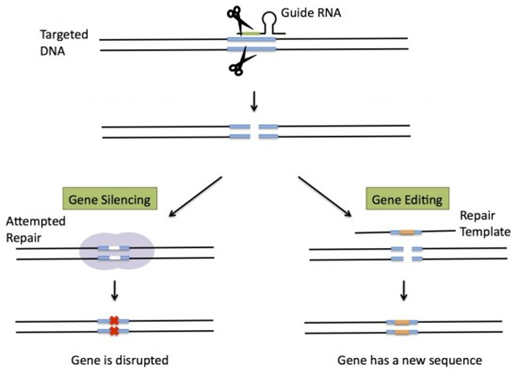CRISPR-CAS explained:
- Genetic variation is key to improved crops
- Genetic variation can come from spontaneous mutations or induced mutations through classical breeding methods (e.g. random mutagenesis)
- For various traits, no genetic variation exists in potato
- We can use CRISPR-Cas to add genetic variation variation in already good varieties, without adding any new DNA to the genome
- We design a guide, which is a small RNA molecule, with the aim to find the target spot where we want a mutation induced (a genetic location, DNA)
- We add the gene scissor, which is an enzyme, to the guide to form a complex
- The complex is transferred into a cell, where the guide find the genetic location and the gene scissor makes a cut at the spot
- The complex is unstable and is broken down, and leaves the cell with a cut in the DNA (an injury)
- The cell starts its own repair mechanism to take care of the injury, but sometimes repairs it different from how it looked originally = a mutation has been induced
Video "Kindly provided by Max-Planck-Gesellschaft"

